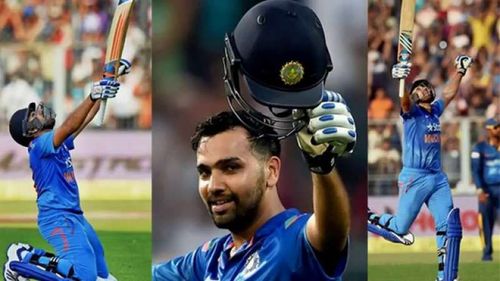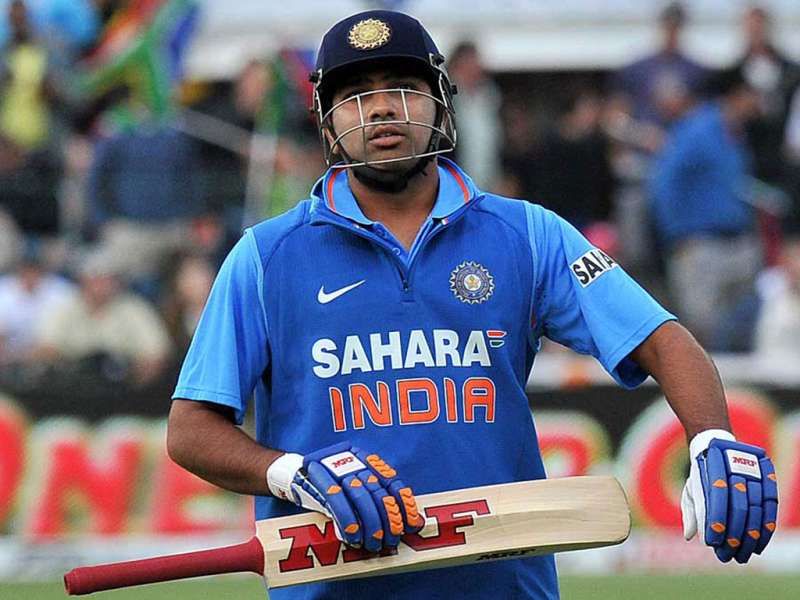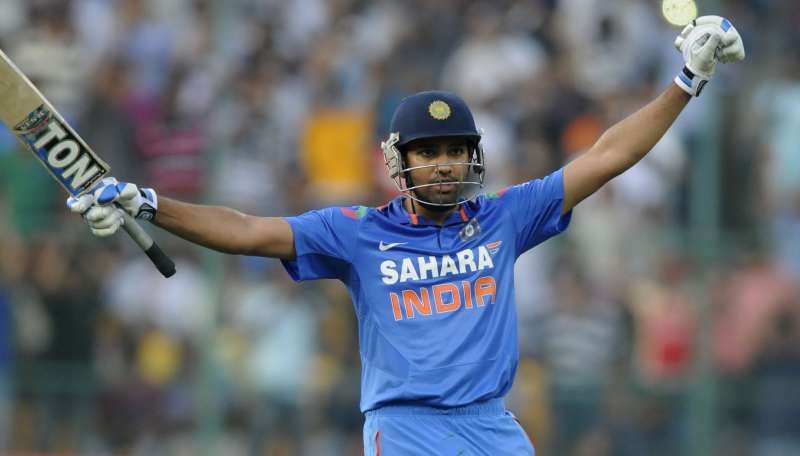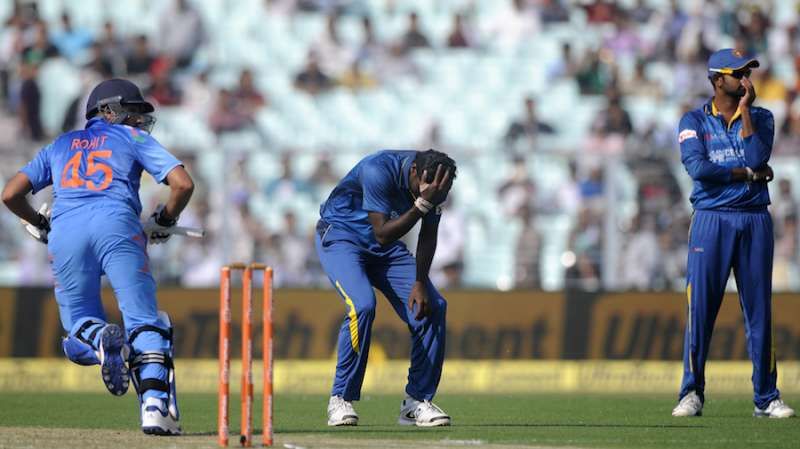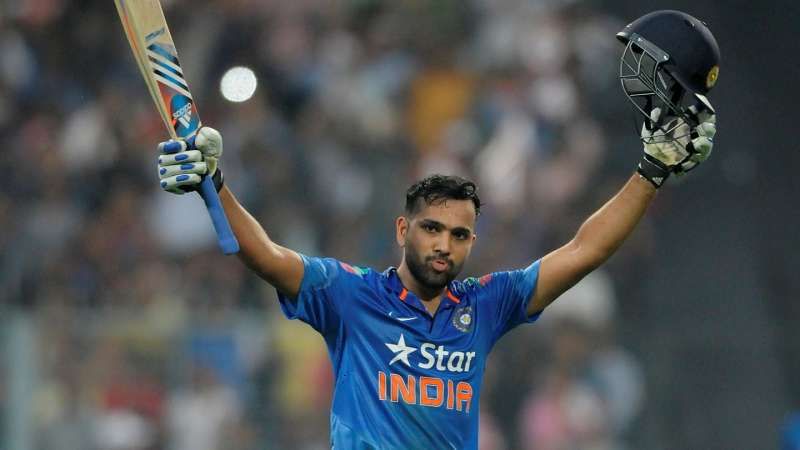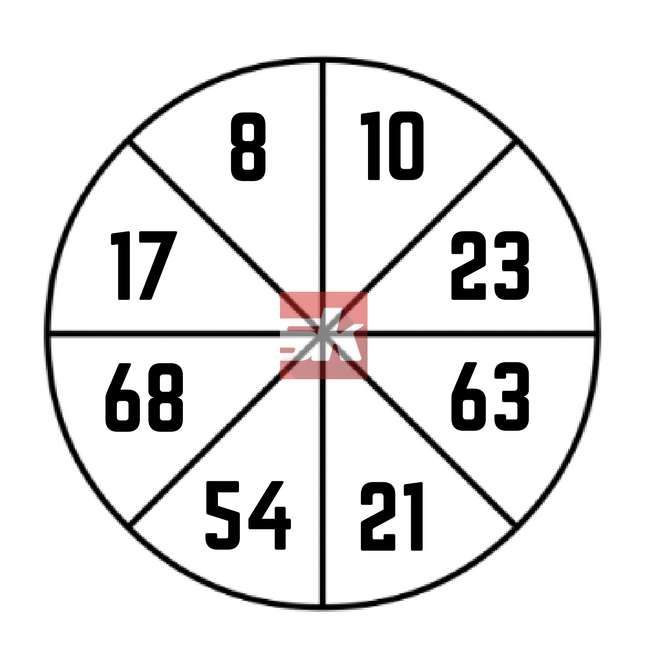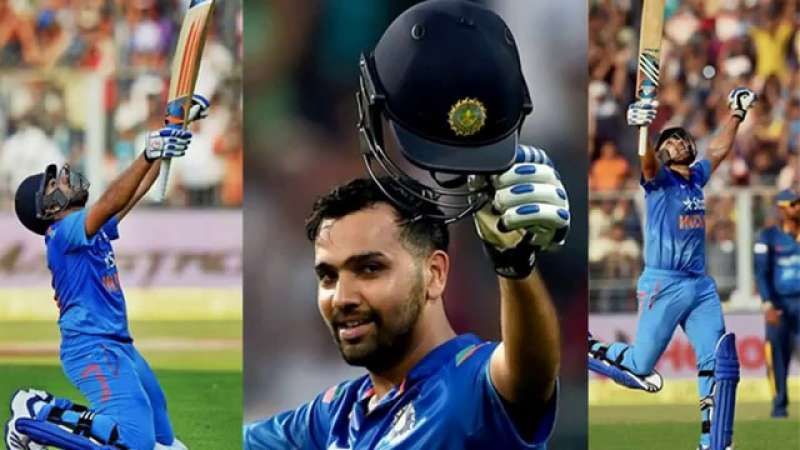
SK Elite: Rohit Sharma 264, Sri Lanka 251
Despite yearning for a strange sense of excitement, humans continue living by a routine that remains defined by monotony and repetition. In a world where the extraordinary rarely occurs, man's anticipation of all things adventurous remains steeped in reality – not going beyond the usual and known.
And so, as a capacity crowd stepped onto the hallowed Eden Gardens on 13th November 2013, the hopes of a spectacular match between India and Sri Lanka remained confined to a few blazing centuries by quality batsmen, a couple of mighty blows and a last over fanatical finish.
That was the ultimate thrill. It was the ultimate moment for a packed stadium. However, what followed defied all logic – it was carnage; ‘one that transcended it all,’ said a fan who was lucky enough to witness history being made in front of her own eyes.
After catching the eyes of the fans and the selectors with his talent, Rohit Sharma was drafted into the Indian team when he was just 19 for the ODI series in England just before the 2007 World T20. But, the Mumbaikar showed why he is considered so special only in the inaugural edition of the World T20 when he scored a match-winning fifty against South Africa in a do-or-die match in Durban and followed it up with a crucial 16-ball 30 in the final to propel India to 157 in their 20 overs.
He continued his good run with the bat in the 2008 CB series where he scored a fluent 66 in the first final at Sydney. THAT’S IT. His brief juggernaut with the bat came to an end during the series. Though he scored fifties on the odd occasion, his place in the Indian XI was under threat.
For the next five years, he was in and out of the team as he failed miserably in the middle order, scoring just 1978 runs in 81 innings at an average of 30 and strike-rate of 78.
It would have been an injustice to the talent he possessed if his career came to an end in such a sad manner. It was then that the moment of magic happened in his career. After Sachin Tendulkar announced his retirement from ODIs and with Virender Sehwag and Gautam Gambhir struggling to score runs, India needed someone to step up and do the job for the team at the top of the order.
ENTER, ROHIT SHARMA VERSION 2.0 AND AS THEY SAY, THE REST IS HISTORY
Ever since skipper MS Dhoni put his faith in a 26-year-old Rohit to open the batting with Shikhar Dhawan in the 2013 ICC Champions Trophy, there has been no turning back for the right-hander. He grabbed the opportunity with both hands and later that year, became only the third batsman to score a double-century in ODIs.
Just when things were going well, though, Rohit injured his finger during the 2014 ODI series in England and was out of action for the next three months. In the meantime, the 2015 World Cup was just around the corner and both Dhawan and Ajinkya Rahane made full use of Rohit’s absence to make a case for themselves.
India now faced a huge dilemma as to who would open the innings in the extravaganza as the series against Sri Lanka was the last ODI series India were supposed to play before announcing the squad for the tournament.
Who would open the batting with Rahane? Who would open the batting with Dhawan? Will Rohit feature in the Indian XI in the World Cup? A lot of questions had to be answered with just two ODIs left for India before the squad had to be picked.
Rohit was called up to face Sri Lanka in the fourth ODI of the five-match series, which was already in India’s bag, thanks to wins in the first three matches. The day arrived. All roads in Kolkata led to the historic Eden Gardens for what everyone considered a dead rubber except the one man who was replacing Dhawan in the playing XI. Skipper Kohli won the toss and chose to bat first with two Mumbai batsmen (Rahane and Rohit) opening the innings for the hosts.
The spectacle at Eden Gardens
It was evident that Rohit had not played competitive cricket for nearly three months as he looked rusty at the start of the innings. In the fifth over of the innings, Rohit charged at Shaminda Eranga and slashed at a delivery to get an outside edge. The ball flew straight towards the third man fielder. Thisara Perera, the fielder at that position, spilt an easy chance as Rohit survived a huge scare whilst batting on just 4 off 17 balls.
At that moment, little did Thisara know that his dropped catch would be the costliest drop ever. For the next 150 minutes, it was one-way traffic with the fans were glued to their television sets in awe of India's own Hitman. It took seven overs for Rohit to score his first boundary, but the Mumbai Indians skipper looked comfortable at the crease ever since being dropped.
Rahane and Ambati Rayudu were dismissed early and Rohit was joined by skipper Virat Kohli at the crease. The duo started doing what they do best, sending the opposition fielders on a leather hunt.
Rohit was sedate at the start of the innings and reached his fifty off 72 balls, with just five fours. A quick look at his career stats suggests that he is a slow starter but once he gets his eye in, the opposition have a torrid time on the field. This innings was no different as Rohit started cashing in.
| RUNS | BALLS | STRIKE-RATE |
|---|---|---|
| 50 | 87 | 69.4 |
| 100 | 100 | 100 |
| 150 | 125 | 120 |
| 201 | 151 | 132.45 |
| 250 | 166 | 150.6 |
| 264 | 173 | 152.6 |
The next 28 balls the Sri Lankan bowlers bowled at Rohit saw the batsman score his next fifty runs. Rohit reached his fifth ODI century at a run-a-ball with the help of 12 fours and a lone six. It was just the 30th over and with Rohit already batting on 100, there was a sense of deja-vu amongst the Indian fans as they recounted his magnificent innings at the M Chinnaswamy Stadium in Bengaluru, where he scored 209 against the Aussies.
Rohit stepped on the accelerator after reaching the three-figure mark and scored seven fours and two sixes in the next 25 balls to reach 150. In the meantime, Kohli reached yet another fifty and was run-out for 66, another incident that took us back to Rohit's first double century where a mix-up between the two cost the current Indian captain his wicket.
Also read: SK Elite: Sachin Tendulkar's masterclass against Australia
Raina departed soon after and Rohit was joined by Robin Uthappa at the crease. Rohit managed to score 47 runs off the next 25 balls with the help of five more boundaries and two hits beyond the fence.
Batting on 197 off just 150 balls, Rohit was just three runs away from rewriting history when the bowler Nuwan Kulasekara bowled a full ball on the middle stump, which was driven through the covers by the batsman. With Mahela Jayawardene chasing the ball, the nation stood still, with bated breath, however, Rohit’s perfect timing made sure that the ball beat the fielder and reached the fence.
When a Maggi Man became a History Maker
As the umpire signalled a boundary, the entire Eden Gardens crowd stood up in unison to acknowledge the feat – Rohit had become the first man in history to score two double centuries in ODIs. It was still the 46th over and Rohit posed a big threat to Sehwag’s 219, the highest individual score in an ODI until November 12, 2014.
After surviving a dropped catch early in his innings, Rohit got another reprieve just after reaching his 200 as Seekuge Prasanna dropped a sitter at the square-leg boundary. In the next over, Sharma smashed Shaminda Eranga for 4, 6 (nb), 6, 0, 4, 0, 1. His six off the free-hit will go down in history as that was the one that took him to 222, 3 more than Sehwag’s score to make him the batsman with the highest individual score in an ODI.
Robin Uthappa, who was auditioning for a place in the Indian ODI team, played one of the most selfless innings of his career, giving the strike to Rohit, who was sending the balls to the fence with ease.
In the next over, Rohit plundered Kulasekara for three fours and a six with the latter being a combination of a scoop and a paddle sweep to a full and wide ball. Unlike the other scoops/sweeps, though, he didn’t hit the ball over the keeper’s/fine leg’s head, but instead sent the ball over the long-on fielder.
The first ball of the next over saw the Mumbai batsman reach yet another milestone as he became the first batsman to score 250 in an ODI. His last 50 took him just 15 balls with the help of seven boundaries and three sixes – 46 out of the 49 runs coming in boundaries.
Eventually, Sri Lanka’s nightmare came to an end as Rohit holed out to Mahela Jayawardene for a stunning 264 off 173 balls, a knock consisting of 33 fours and nine sixes. The whole crowd stood on their feet to acknowledge one of the best ODI innings of all time and thank Rohit for treating them to such a spectacle.
| BALLS | RUNS | 4s/6s | STRIKE-RATE | |
|---|---|---|---|---|
| NUWAN KULASEKARA | 32 | 58 | 8/2 | 181.25 |
| ANGELO MATHEWS | 29 | 30 | 2/2 | 103.44 |
| SHAMINDA ERANGA | 31 | 53 | 7/2 | 170.96 |
| THISARA PERERA | 14 | 25 | 3/1 | 178.57 |
| SEEKKUGE PRASANNA | 37 | 43 | 3/2 | 116.21 |
| AJANTHA MENDIS | 27 | 49 | 9/0 | 181.48 |
| TILLAKARATNE DILSHAN | 3 | 6 | 1/0 | 200 |
| TOTAL | 173 | 264 | 33/9 | 152.6 |
India scored a mammoth 404/5 in their 50 overs and forget about chasing the total, going past Rohit Sharma's score was a huge task for Angelo Mathews and co. Dhawal Kulkarni's four wickets, along with a brace each from Umesh Yadav, Stuart Binny and Axar Patel restricted the visitors to just 251 runs in 43 overs, 13 runs fewer than Rohit's individual score.
The spectators at the Eden Gardens were lucky enough to witness such a spectacle as that could be the only instance of a batsman scoring 250 runs in an ODI innings ever, thanks to the revisions made by the ICC.
Just like Brian Lara’s 400 in Tests, Rohit’s 264 in ODIs will be considered the benchmark for greatness.
